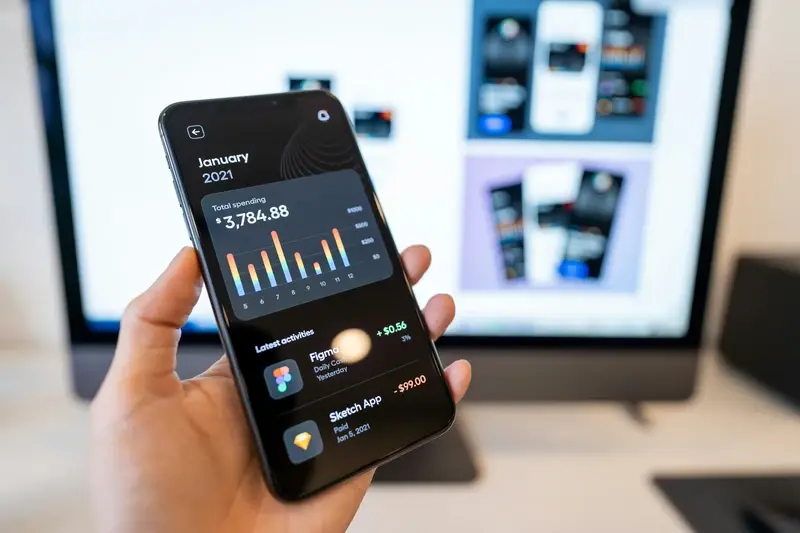What Testing Is Required For Banking Apps?
Banking apps handle some of the most sensitive data on our phones—your money, personal details, and financial history all live in these little digital wallets. After eight years of working in mobile app development, I've seen firsthand how one small bug or security gap can turn into a massive headache for both users and banks. The fintech industry has exploded in recent years, bringing us everything from digital-only banks to investment apps that let you buy shares whilst waiting for the bus.
But here's the thing about financial apps—they can't just work most of the time. They need to work perfectly, every single time. When someone taps 'send £500 to mum', that money needs to go exactly where it's supposed to go, when it's supposed to go there. No exceptions. This is where quality assurance becomes absolutely critical; we're not just testing whether buttons work or screens load properly, we're testing whether people's financial lives stay secure and functional.
Testing a banking app isn't just about finding bugs—it's about protecting people's financial futures and maintaining trust in an increasingly digital world
Financial validation goes far beyond checking if numbers add up correctly. We need to test everything from complex fraud detection systems to simple password fields, making sure hackers can't find even the tiniest crack to slip through. The stakes are high, the regulations are strict, and the users expect nothing less than perfection.
Understanding Banking App Security Standards
Banking apps handle some of the most sensitive data imaginable—your money, personal details, and financial history. That's why security standards for these applications are incredibly strict and constantly evolving. Unlike a simple gaming app or social media platform, banking apps must meet rigorous requirements that protect both users and financial institutions from cyber threats.
The main security frameworks that banking apps must follow include PCI DSS (Payment Card Industry Data Security Standard) for card transactions, ISO 27001 for information security management, and various regional regulations. In the UK, apps must comply with FCA guidelines, while European apps follow PSD2 requirements for strong customer authentication.
Data Encryption and Secure Communication
Every piece of information flowing through a banking app needs to be encrypted—both when it's stored on devices and when it travels between the app and bank servers. This includes using advanced encryption methods like AES-256 and ensuring all communication happens over secure HTTPS connections.
Multi-Layered Authentication
Banking apps can't rely on just passwords anymore. Modern security standards require multi-factor authentication, which might include biometric verification, SMS codes, or hardware tokens. The app must also detect suspicious behaviour patterns and flag potentially fraudulent activities before they cause damage.
Meeting these standards isn't optional—it's the foundation that makes banking apps trustworthy and legally compliant.
Core Testing Types for Financial Applications
Testing banking apps isn't like testing your average social media platform—the stakes are much higher and the requirements far more complex. After working with countless fintech clients over the years, I've seen what happens when corners get cut during the quality assurance phase. It's never pretty and it's always expensive to fix later.
The foundation of any robust financial validation process starts with functional testing. This covers the basic operations users perform daily: checking balances, transferring money, paying bills. But here's where it gets interesting—you need to test not just the happy path where everything works perfectly, but all the edge cases too. What happens when someone tries to transfer more money than they have? How does the app respond to network interruptions mid-transaction?
Critical Testing Categories
- Security testing to identify vulnerabilities and protect sensitive data
- Integration testing for third-party payment processors and banking systems
- Usability testing to ensure accessibility for users with disabilities
- Regression testing after every update to prevent breaking existing features
- Device compatibility testing across different phones and operating systems
Always test your banking app on older devices with limited memory and slower processors—your users might not have the latest iPhone, and their experience matters just as much.
The reality is that fintech applications require a multi-layered testing approach that goes well beyond standard app testing protocols. Each layer serves a specific purpose in building user trust and regulatory compliance.
User Authentication and Data Protection Testing
When it comes to banking apps, getting authentication wrong isn't just embarrassing—it's catastrophic. I've worked on financial applications where a single security flaw could have exposed thousands of customer accounts, and let me tell you, that's the kind of mistake that keeps CEOs awake for weeks. User authentication testing needs to cover everything from simple password checks to complex biometric systems.
Your testing team should hammer every login method your app supports. Face ID, fingerprint scanning, PIN codes, passwords—each one needs rigorous testing under different conditions. What happens when someone tries to log in with a dirty finger on the scanner? Does the app handle failed authentication attempts properly? Can users still access sensitive data if they force-close the app mid-login?
Data Encryption and Storage
Banking apps store incredibly sensitive information, so data protection testing goes far beyond basic password security. Every piece of customer data needs to be encrypted both in transit and at rest. Your testers should verify that account numbers, transaction histories, and personal details remain scrambled even if someone gains access to the device's storage.
Session Management
One area that often gets overlooked is session timeout testing. Banking apps should automatically log users out after periods of inactivity, but this feature needs thorough testing across different scenarios—background app switching, phone calls, and network interruptions can all affect how sessions are managed.
Transaction Processing and Payment Validation
When it comes to fintech applications, transaction processing sits right at the heart of everything—and frankly, it's where things can go spectacularly wrong if you're not careful. I've worked on banking apps where a single decimal point error could have cost millions, so trust me when I say this area demands your absolute attention during testing.
Your quality assurance team needs to verify that every transaction follows the correct path from start to finish. This means testing successful payments, failed payments, cancelled transactions, and those awkward moments when someone's internet cuts out halfway through. You can't just assume the happy path will work; you need to test every possible scenario that could happen in the real world.
Payment Gateway Integration
Testing payment gateways requires a methodical approach—you're not just checking if money moves from point A to point B. You need to validate that transaction IDs are unique, that duplicate payments are prevented, and that refunds process correctly. Financial validation becomes particularly tricky when dealing with multiple currencies or international transfers.
The most expensive bugs in banking apps are usually the ones that seem like the smallest issues during testing
Don't forget about edge cases like network timeouts, partial payments, or when external payment services go down unexpectedly. These scenarios happen more often than you'd think, and your app needs to handle them gracefully without losing anyone's money.
Performance Testing Under High Load Conditions
Banking apps face massive pressure during peak times—think salary day, tax deadlines, or market crashes. I've seen apps crumble when thousands of users try to check their balance simultaneously, and trust me, that's not a phone call you want to receive from a client! Performance testing under high load isn't just about making sure your app works; it's about making sure it works when people need it most.
Load Testing Scenarios
Your banking app needs to handle different types of stress. Load testing simulates normal usage with hundreds or thousands of users logging in, checking balances, and making transfers at the same time. Stress testing pushes things further—what happens when your app gets double or triple the expected traffic? Then there's spike testing, which mimics sudden surges like breaking financial news causing everyone to check their investments at once.
- Response time should stay under 3 seconds for basic functions
- Transaction processing must remain accurate under pressure
- Database connections shouldn't timeout or fail
- Memory usage should stay within acceptable limits
- Error rates must remain below 1% during peak load
Real-World Testing Approach
Don't just test with perfect conditions. Banking apps get hit hardest when networks are slow, servers are busy, and users are frantically trying to access their money. Your testing should include scenarios with poor connectivity, multiple device types, and varying user behaviours—because real users don't follow your perfectly planned user journey!
Regulatory Compliance and Audit Requirements
Banking apps don't operate in a free-for-all environment—they're governed by strict rules that vary depending on where your users are located. In the UK, you'll be dealing with the Financial Conduct Authority (FCA), whilst American fintech companies must satisfy the Federal Financial Institutions Examination Council (FFIEC). Each regulatory body has its own set of requirements that your app must meet before it can handle real money.
The testing process for regulatory compliance isn't just about checking boxes; it's about proving your app can protect people's money and personal information. Quality assurance teams need to document every test they perform, creating an audit trail that regulators can follow. This means keeping detailed records of what was tested, when it was tested, and what the results were.
Documentation and Evidence
Financial validation becomes particularly important during audit season. Regulators want to see proof that your app handles transactions correctly, stores data securely, and follows all the rules they've set out. This includes testing your app's ability to detect suspicious activity, comply with anti-money laundering requirements, and maintain accurate financial records.
Create a compliance testing checklist specific to your target markets early in development—it'll save you months of work later when audit time comes around.
Third-Party Integration and API Security Testing
Banking apps rarely work alone—they connect to payment processors, credit agencies, government databases, and other financial services through APIs. Each connection creates a potential security risk that needs testing.
When testing third-party integrations, you need to check what happens when those external services go down or respond slowly. Your app should handle these situations gracefully without exposing sensitive data or crashing. I always test with deliberately broken API responses to see how the app behaves when things go wrong.
API Authentication and Data Flow
Every API call must use proper authentication tokens that expire regularly. Test that your app refreshes these tokens correctly and doesn't store them insecurely. Check that sensitive data like account numbers or personal details are encrypted when sent to third parties.
Monitoring Integration Points
You should test logging and monitoring for all external connections. When an API fails, your security team needs to know immediately. Test that alerts work properly and that failed requests don't reveal system information to potential attackers.
Don't forget to verify that third-party services meet the same security standards as your banking app. A weak link in your integration chain could compromise your entire system, no matter how secure your own code might be.
Conclusion
Banking app testing isn't something you can cut corners on—not when people's money and personal data are on the line. Through my years working in fintech development, I've seen what happens when testing gets rushed or overlooked, and trust me, it's never pretty. The regulatory fines alone can sink a project, never mind the damage to your reputation.
What we've covered in this guide represents the bare minimum for any financial application. Security testing, performance validation under heavy loads, compliance checks, third-party integration testing—each piece matters. Miss one and you're building on shaky foundations. The quality assurance process for banking apps takes longer than standard consumer apps, costs more, and requires specialists who understand financial validation inside out.
But here's the thing: this investment pays for itself. A properly tested banking app builds trust with users; it meets regulatory requirements from day one; it handles peak loads without breaking down when everyone's checking their accounts on payday. Most importantly, it protects the very people who've chosen to trust you with their financial lives. That's not just good business—it's the right thing to do.
Share this
Subscribe To Our Learning Centre
You May Also Like
These Related Guides

How Do I Ensure Regulatory Compliance When Developing A Mobile Banking App?

What Security Requirements Add to Financial App Costs?



